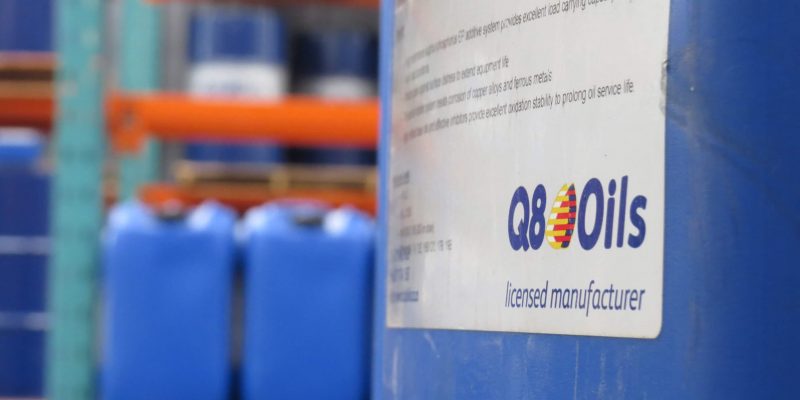If you take a close look at the label on a two-stroke (2T) oil container, it is very likely that you will come across specifications such as API, ISO/Global and JASO. In this final issue of our three part series on 2T oil we will endeavour to explain what this is all about and how to select a suitable lubricant for a specific two-cycle engine.
If you take a close look at the label on a two-stroke (2T) oil container, it is very likely that you will come across specifications such as API, ISO/Global and JASO. In this final issue of our three part series on 2T oil we will endeavour to explain what this is all about and how to select a suitable lubricant for a specific two-cycle engine.
The American Petroleum Institute (API) was the first organisation to define a classification system for 2T oils. Of four originally proposed API two-cycle classifications, only one (API TC) is current. Two (API TA and TB) are obsolete, never having been developed further than proposals. The fourth (API TD for water-cooled 2T outboard engines) has been superseded and is no longer recommended.
API TC: These oils are designed for various high-performance engines, typically between 200 and 500 cc, such as those on motorcycles with high fuel-oil ratios. These oils address ring-sticking, pre-ignition and piston/cylinder scuffing problems.
Japanese motorcycle manufacturers found the limits demanded by the API TC specification too slack. API TC oils produced excessive smoke and could not prevent exhaust blocking in high performance Japanese 2T engines. In response the Japanese Engine Oil Standards Implementation Panel (JASO) introduced the following specifications:
JASO FA: Original specification to regulate lubricity, detergency, initial torque, exhaust smoke and exhaust system blocking. These are medium to high ash mineral based 2T oils.JASO FB: Provides increased lubricity and detergency, reduced exhaust smoke and exhaust system blocking compared to FA. They do not require any synthetic base oils to meet specifications.
JASO FC: Lubricity and initial torque requirements same as FB, however, far higher detergency, exhaust smoke and exhaust system blocking requirements over FB. These oils may be described as semi-synthetic, low ash lubricants.
JASO FD: Same as FC but with more demanding detergency requirements. Qualifying lubricants are synthetic or semi-synthetic, extreme temperature, anti-scuff, high lubricity, low smoke, and low ash oils.
During the mid-1990s it became clear that the JASO Specifications could not satisfy the requirements of the high performance European two-stroke engines of the time. The International Organization for Standardization (ISO) classifications listed below were developed to address these shortcomings. The ISO basis is the corresponding JASO standard plus an additional three-hour Honda test to quantify piston cleanliness and detergent effect.
ISO-L-EGB: Same requirements as JASO FB plus the piston cleanliness test. It is generally accepted that API TC rated oils are equivalent to these oils. They do not require any synthetics to meet specifications.
ISO-L-EGC: Same requirements as JASO FC plus the Honda piston cleanliness test. These oils are high lubricity and high detergent, low smoke, semi-synthetic, low ash lubricants.
ISO-L-EGD: Same requirements as JASO FD plus the test for piston cleanliness and detergent performance. These lubricants are internationally recognized as the highest performance air-cooled 2T oils available in the market place. Qualifying lubricants are synthetic or semi-synthetic, extreme temperature, anti-scuff, high lubricity, low smoke, low ash oils.
Low Ash detergent additives are used in higher performance JASO and ISO 2T oils. These oils are designed for air-cooled, high performance engines that operate under severe load and high temperature conditions. Low Ash detergents keep deposits to a minimum at high temperatures. After these compounds have performed their task, they burn off and are swept away during the normal combustion process. Ash type detergents depend on higher combustion temperatures to clear away. Consequently the use of high performance air-cooled oils in water-cooled outboard or other mildly tuned 2T engines operating at lower temperatures is NOT recommended.
Two-stroke water-cooled outboard motors operate at much lower temperatures than their air-cooled counterparts and are ‘allergic’ to ash type oils. The National Marine Manufacturers Association (NMMA) has very specific lubrication requirements for water-cooled two-stroke marine outboard engines. Ashless oils conforming to NMMA TC-W3 specifications are the only lubricants recommended for use in all 2T outboard motors these days. TC-W3 superseded the NMMA TC-W & TC-WII specifications. It is also important to note that oils designed to meet TC-W3 requirements are not suitable for high performance air-cooled two-stroke engines.
Equally important as the oil specifications is the fuel and oil mixing ratio. Always mix the fuel and 2T oil exactly as the engine manufacturer recommends. Adding too much oil can lead to early ring sticking and plug fouling, whilst too little may result in a lack of lubrication, mainly piston scuffing.
Blue Chip Lubricants and Q8Oils have a complete range of two-stroke oils for a wide variety of 2T engines. If you have any questions concerning two-cycle engine lubricants, our experts are at your disposal and ready to provide you with advice and guidance. Simply mail us at info@bcl.co.za.


